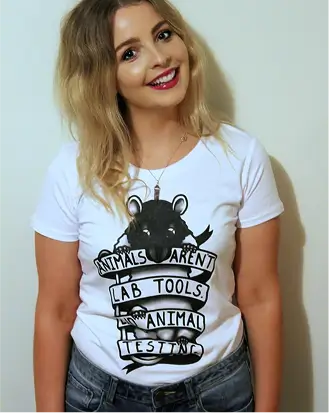Dogs have been used for science in NZ in a variety of ways, including both non-harmful and cruel methods. People are understandably upset by invasive experiments. Companion Animals NZ reported 31% of NZ households include dogs, with most of them stating companionship, love and affection as reasons to getting dogs.1 Research has repeatedly shown the strong bond between dogs and their person and more than once equated it to the bond between parent and child.2,3,4
You can actually register your dog for (likely non-harmful) research at the University of Auckland.5 And Massey University has a Working Dog Centre to do research specifically into genetics and health issues of dogs who are used for work.6
For example, dogs in NZ have been used for:
- testing insecticides, pesticides and other toxins
- attempting to model human diseases and conditions
- measuring the safety of food and ingredients
- testing pain relief
- researching disease detection
- researching nutrition and how it affects biological functions and food preferences
- testing new treatments for skin infections
- studying performance, nutrition and underlying causes of disease in working dogs as a vital part of the animal agriculture sector (in 2009, there were 150,000 working dogs in NZ)
- researching fitness and training regimes in police dogs and training dog handlers
- teaching vet and vet nurse students basic concepts like animal handling and basic clinical/husbandry skills.
Places that use dogs for science in NZ include private companies, universities, and polytechnics.
Dogs used for science in NZ are sourced from breeding facilities, farms, city council pounds and other public sources.*
*According to the Ministry for Primary Industries, public sources include: Public donations, animals obtained from a pound, a pet shop or other public sources. This includes companion animals who are used for the duration of the exercise (e.g. veterinary nurse training).
Discover real-life examples of how dogs have been used in NZ below!
- https://www.companionanimals.nz/2024-nz-pet-data-report
- https://psycnet.apa.org/doi/10.1037/0735-7036.112.3.219 (1998)
- https://doi.org/10.1016/j.cpnec.2021.100071 (2021)
- https://doi.org/10.1027/1016-9040/a000552 (2025)
- https://clevercaninelab.auckland.ac.nz/research/
- https://www.massey.ac.nz/about/colleges-schools-and-institutes/college-of-sciences/our-research/research-projects-and-groups/working-dog-centre
Testing a parasite treatment
After a pilot study with just one dog, six more were given an experimental parasitic treatment. Regular blood samples were taken through a catheter.
Testing the effect of diet on farm dog performance
Working dogs were fed a diet very high or very low in carbohydrates. Their blood glucose and activity were monitored three times over four days each.
Analysing dog movements
Colony dogs were prepared with reflective markers and an activity collar. Their movements on a treadmill at various speeds were recorded.
Testing the eyes of working dogs
Eye examinations were performed on working sheep dogs. Medication for pupil dilation was given, and faeces samples were taken from most dogs.
Transplanting faeces as diarrhoea treatment
A dog with diarrhoea was treated with laxatives and warm water before a faeces sample from a healthy dog was inserted into his colon. Samples were taken before and after.
Investigating farm dogs for four years
Working farms dogs were examined regularly for four years. Health problems and fate were recorded.
Using bones of euthanised shelter dogs
Cadavers of dogs killed at an animal shelter were donated. Holes were drilled into leg bones and fitted with screws.
Analysing Greyhound race injury statistics
Historical data on Greyhound races between 2014 and 2019 were analysed. Injuries and deaths were investigated.
Studying medical data of cat and dog CT-imaging
Medical data from cats and dogs were gathered, and animals that had been euthanised for other reasons were examined.
Testing different combinations of pain meds
Eight dogs are treated with four different combinations of the test drugs in random order with two-week breaks in between. Two catheters are placed in leg veins (for drug injection and blood samples). For the test, dogs are fasted for 12 hours and anaesthetised. EEG is recorded with electrodes near the brain to measure response to electric shocks. Regular blood samples are taken for 8 hours.
Teaching dogs to smell out catfish
Five pet dogs were trained over several months to identify catfish and goldfish smell in water samples.
Determining how common E. coli is in pets
Rectal swaps were taken from cats and dogs presented at veterinary clinics, and their caregivers filled out a questionnaire.
Testing working dogs for a gene mutation
Buccal swabs (inside the cheek) were collected from working dogs to analyse their DNA.
Testing dogs’ preception of time
Dogs were trained to press different levers based on their exposure to different types of light.
Surveying respiratory disease in racing Greyhounds
Laboratories sent in serum samples of dogs for analysis. Additionally, 17 racing Greyhounds were tested.
Trying to make rat poison unattractive for dogs
Dogs were fasted overnight and then given two food bowls with different kinds of repellent on one of them.





